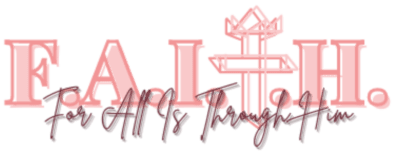Valentine’s Day is a day of love celebrated on February 14th, where romantic couples shower each other with romantic gestures such as gifts, flowers, chocolates, a romantic dinner or gateway to showcase their love for their partner.
The romantic celebration is popularly known worldwide, however the origin to this occasion remains a mystery and seems to go without being questioned.
In today’s blog post I will be debunking the concept of this day that we celebrate love and uncover the truth behind it all.
Let’s begin!
What is the origin of Valentine’s Day?

What we know of Valentine’s Day is not what it all seems to be.
The told histories of the celebration over time had been transformed as a romantic retold history.
The origin of the romantic holiday, however, started off as a pagan holiday called Lupercalia celebrated by the Romans. This holiday was held every year from February 13 to 15 in Rome and its celebration dates back to the third century B.C.E.
Lupercalia was a bloody feast as the Romans would sacrifice goats and dogs by a Luperci (priest), who would go to the altar to have their foreheads touched by a bloody knife after killing the animals, and afterwards their foreheads would be wiped with wool dipped in milk.
If that doesn’t get any more strange, they were required to laugh all throughout the ritual.
And it doesn’t even end there.
After this, they were asked to strip or thongs of skin from the animal sacrifice, and they would run around the place drunk and naked or almost naked, whipping any woman in sight with the strips of skin they cut from the animal.
The whipping was to promote fertility, so the women who were whipped were believed to become fertile. Therefore, the women would strip their clothes and gladly receive the whipping.
I don’t know about you, but this just keeps getting weirder.
And we’re not even done, there’s more.



Another part of the festival was the randomly choosing of a mate. The man would randomly choose a woman by picking her name from a jar or hat. They would then be paired throughout the duration of the festival. Some would stay for a short period of time, whereas others will stay longer until the next festival. Others would fall in love and get married.
The Lupercalia festival was outlawed in the late fifth century by Pope Gelasius I because he deemed it to be unchristian.
Pope Gelasius I changed the festival in attempts to win over the pagans into Christianity in efforts to “christianise” the festival because it was becoming hard to control due to its immense popularity.
Lupercalia was changed to be the day of the feast to celebrate the martyred Saint Valentine on February 14 in A.D. 496.



However, the efforts to christianise Lupercalia to Valentine’s Day was not effective because the symbols used in Lupercalia remained similar in the celebration of the Valentine’s Day. For example, the colours red and white are still used. The colour red represented the blood of the animal sacrifices in Lupercalia. The colour white represented the milk that was used to wipe the priests’ foreheads. Those were the symbols of new life, procreation, fertility and lust.
As Christians we know that Jesus and the apostles after him such as Paul have taught us that sexual immorality is wrong, its a sin, and it is surely something we shouldn’t entertain. In fact we should flee from it (1 Corinthians 6:9-10,18, 1 Thessalonians 4:3-5, Ephesians 5:3, Hebrews 13:4, Matthew 5:28).
So, are the love hearts that we see used on Valentine’s Day a way to hide the truth that we are in fact not celebrating love but rather lust?
We are also taught as Christians by the instructions from God to not follow pagan practises (Deuteronomy 12:29-32, Leviticus 18:1-30).
Some may believe that the instructions which God had told the Israelites do not directly apply to us.
But, you are wrong there.
The last thing Jesus said to the disciples, which applies to followers of Jesus to today, is that we should teach people everything that He has commanded us (Matthew 28:20). This means that what was taught to us by God, we must follow. And He said “everything”. So that includes things from the Old Testament and the things you may disagree with or dislike that are in the Bible. You still must obey them all.
To God obedience is better than sacrifice because if you want to show Jesus that you love Him, you must keep His commandments (1 Samuel 15:22, John 14:15, John 15:14).
Don’t be deceived!
See, the enemy comes as an angel of light, although he is the prince of darkness (2 Corinthians 11:14). So be aware that what may seem cute and innocent on the outside doesn’t mean it is straight up right or godly.
The enemy loves wearing masks, and he will disguise himself to anything that seems desirable to your eye to lure you into sin. That’s what he did with Eve with the forbidden fruit (Genesis 3:1-7).
So don’t think you can get away with him not trying to do the same with you. His tactics never change, he is still operating in the same way till this day.
Who is Saint Valentine?



Saint Valentine (or Valentinus) was a priest who was imprisoned and beheaded on February 14 in the third century A.D. for marrying young couples secretly which defied the orders of Emperor Claudius II.
The martyrdom was honoured by the Catholic Church with the celebration of Lupercalia and was later renamed St. Valentine’s Day.
How did it become a romantic holiday?
During the Middle Ages it was commonly believed that February 14 was the beginning of mating season for birds which added to the idea that Valentine’s Day should be a day for love and romance.
What does scripture say about love?



I don’t know about you but I have still yet to see how any of this about Valentine’s Day points us back to God and love.
Is it just me?
If anything it is pointing me to birds, lust, paganism, honouring of man than God and the list goes on.
Love has nothing to do with those things that Lucercalia and Valentine’s Day represents.
In our other ‘Love Week’ blog posts on “What is Love?” and “How to Love” we uncovered that God is Love and love is not equivalent to romance like the way people are obsessed about on Valentine’s Day, but it is an action.
God’s love was expressed to us through the Father giving us His Son to sacrifice His life for our sins so that we can have eternal life in heaven (1 John 4:8-12, John 3:16). From this we see that love is giving and it is sacrificial.
God also commanded us to love (Matthew 22:27-39). Love is not something that we do when we feel compelled to. We love others even when we don’t feel like it and that includes our enemies (Matthew 5:44). We love without an expectation of receiving it in return. We love others because God chose to love us first in the midst of our sins before we even knew Him, He loved us through it all and He still does (1 John 4:10-11, Romans 5:8).
These are things that we do not see and are not celebrated on Valentine’s Day.
As you’re reading this, you may be thinking that the way you celebrate Valentine’s Day has nothing to do with how the Romans used to, but instead you use this day to show your appreciation and love to your partner.
But my question to you is, are you willing to celebrate something knowing the origin is rooted in paganism and lust which points us to Satan?
When something is sin, it is sin. It cannot be reclaimed for the better.
The origin of Valentine’s Day is sinful, it is as simple as that.
Showing love to your partner is not romance or lust. But the devil has deceived us to believe that it is love. Remember the devil counterfeits what God does. God teaches us to love, Satan teaches us to lust.
So, how can we celebrate true love (which is God’s love) on a day that celebrates and teaches us to lust?
“Love does not delight in evil but rejoices with the truth” (1 Corinthians 13:6).
Stay Blessed,
Divine L.
Resources
- The Holy Bible – https://my.bible.com/en-GB
- “3 Reasons Why You Should Not Celebrate Valentine’s Day” – https://www.youtube.com/watch?v=gjg5Z87rDzM
- “Valentine’s Day wasn’t always about love” – https://www.nationalgeographic.com/culture/article/saint-st-valentines-day
- “Lustful origin of Valentine’s Day” – https://www.thegypsythread.org/lupercalia-lustful-origin-valentines-day/



Hi, I am Divine L., your sister-in-F.A.I.T.H., who is passionate about discipling Christian girls to be a walking embodiment of Jesus Christ in their daily lives and to help young girls and woman become who God destined for them to become. It is a great blessing to welcome you to the F.A.I.T.H. sisterhood!

